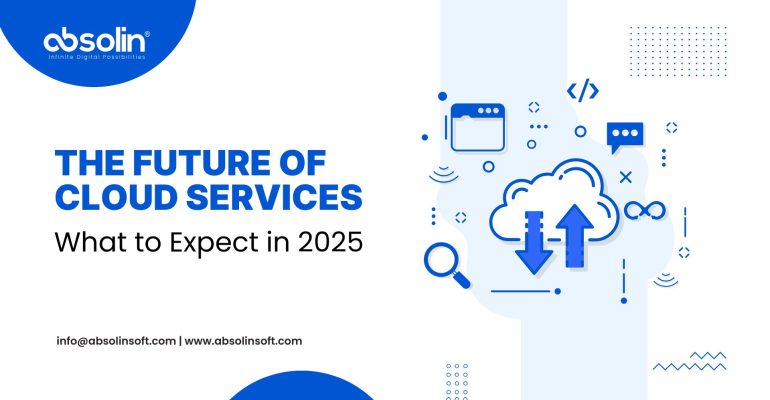The Future of Cloud Services: What to Expect in 2025
In the early days, cloud computing was treated like electricity—a utility you could plug into when needed. But as we are in 2025, the cloud is no longer just a helpful service you tap into. It’s becoming the default environment, the digital oxygen that powers every interaction, every application, and every innovation around us.
Just as we don’t question where the air comes from, future-forward businesses won’t question where their apps are hosted, how their data flows, or how collaboration tools work—because the cloud will be everywhere, embedded invisibly into the fabric of daily operations, user experiences, and AI-driven decision-making.
But what does this evolution mean for businesses, developers, IT leaders, and end users?
Let’s fast-forward and explore the key cloud service trends, technologies, and transformations expected to redefine the digital ecosystem in 2025.
1. The Rise of Industry-Specific Cloud Platforms (Vertical Clouds)
Generic cloud solutions are giving way to customized, industry-specific clouds—tailored for healthcare, finance, retail, manufacturing, and more.
What to Expect:
- Preconfigured compliance templates (e.g., HIPAA, PCI-DSS)
- AI models trained on industry-specific datasets
- Low-code tools optimized for vertical workflows
Example: A healthcare-focused cloud offering AI-assisted diagnostics, patient data security, and telehealth integrations right out of the box.
2. The Maturation of AI-Driven Cloud Services
AI won’t just run in the cloud—it will run the cloud.
2025 Highlights:
- Intelligent resource allocation and cost optimization
- Predictive autoscaling and workload distribution
- AI-driven DevOps (AIOps) for real-time monitoring and troubleshooting
Expect cloud platforms to become autonomous, self-healing environments that reduce manual intervention and maximize performance.
3. Edge Computing and Distributed Cloud Go Mainstream
With IoT, smart devices, and real-time apps booming, businesses are pushing computing power closer to the source of data.
Key Developments:
- Edge locations integrated into public cloud platforms
- Real-time data processing at the device or local node
- Support for AR/VR, autonomous vehicles, and smart cities
In 2025, cloud is no longer centralized—it’s everywhere, extending to the “last mile” of digital interaction.
4. Hybrid and Multi-Cloud Become the Norm
The debate of public vs. private cloud will be obsolete. Instead, hybrid and multi-cloud strategies will dominate.
Drivers:
- Regulatory compliance and data sovereignty
- Workload portability and vendor flexibility
- Cost and performance optimization
Trends to Watch:
- Kubernetes and container orchestration as the unifying layer
- Cloud-native tools supporting cross-platform workflows
- Seamless migration between providers
2025 Outlook: Businesses will optimize “the right cloud for the right job” rather than staying loyal to a single vendor.
5. Serverless and Event-Driven Architectures on the Rise
Serverless computing is becoming the default for startups and agile teams, allowing them to build without managing infrastructure.
2025 Capabilities:
- Event-driven systems that auto-scale based on usage
- Pay-per-invocation pricing models
- Greater support for stateful serverless functions
Result: Faster time to market, reduced operational overhead, and more experimentation with microservices.
6. Security and Compliance Shift Further Left
With the cloud touching everything, cybersecurity and compliance can no longer be reactive.
What’s Changing:
- Integrated security controls at every level of the cloud stacks
- Continuous compliance monitoring
- Automated policy enforcement using AI
Security will no longer be a gate—it will be an embedded layer in every cloud deployment, from code to container to runtime.
7. Green Cloud and Sustainable Infrastructure
As the climate crisis intensifies, businesses will prioritize sustainable cloud practices.
2025 Innovations:
- Carbon-aware cloud regions and energy dashboards
- Optimized workload placement for energy efficiency
- Providers offering sustainability SLAs and carbon offset tracking
Cloud providers will compete not just on speed or price—but on sustainability.
8. Evolution of Cloud-Native Development
Cloud-native will go from buzzword to baseline.
Expect:
- Universal adoption of containers, microservices, and APIs
- More low-code/no-code platforms for business users
- Built-in observability tools and DevSecOps automation
Developers will focus on building value, not infrastructure—thanks to ever-evolving cloud-native platforms.
9. AI, Blockchain, and Quantum Integration
Cloud platforms will increasingly act as launchpads for advanced technologies.
Key Developments:
- Blockchain-as-a-Service (BaaS) for secure, decentralized apps
- AI model training and deployment as plug-and-play cloud features
- Quantum computing resources available on demand
In 2025, you won’t need a lab or supercomputer to explore the frontier—you’ll just need cloud credentials.
10. Personalized Cloud Experiences for Users
The cloud will evolve from being just functional to being context-aware and personalized.
User-Facing Changes:
- AI-curated dashboards and workflows
- Voice and gesture-based interactions
- Dynamic UI adjustments based on usage behavior
Cloud services will adapt to individuals in real time, enhancing user engagement and productivity.
Conclusion: The Cloud of 2025 Is a Living, Learning Ecosystem
The future of cloud services isn’t about adding more virtual servers or faster processors. It’s about smarter, more agile, and more human-centric infrastructure that evolves with business needs, regulatory demands, and environmental realities.
By 2025, the cloud won’t just support your business—it will strategize, optimize, and secure it. It will be self-aware, industry-aware, and increasingly autonomous. Choosing the right mix of technologies and providers will become a core competitive advantage, not just a tech decision.
So, whether you’re an enterprise CIO, a startup CTO, or a solo entrepreneur—the question to ask is no longer, “Should we move to the cloud?” but rather, “How are we evolving with it?”
Want to future-proof your cloud strategy for 2025 and beyond? Absolin can help you build a roadmap tailored to your business needs, compliance goals, and innovation aspirations. Let’s shape your cloud journey together.



